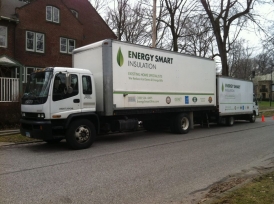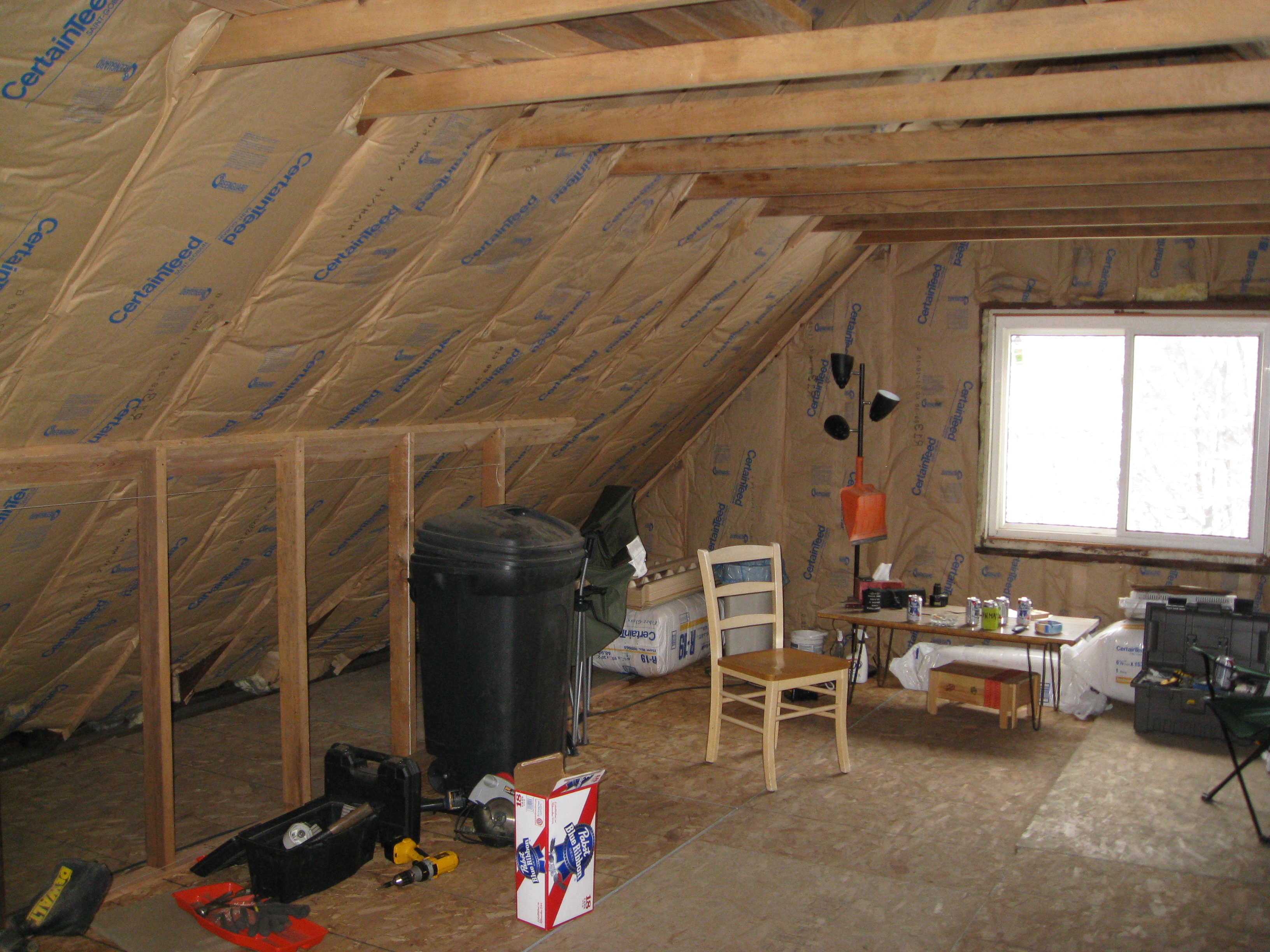Can Mistbox Lower Cooling Bills? Not So Fast.
Guest Post by Cameron Taylor
You may have seen advertisements for air conditioner misting devices like the Mistbox flash across your Facebook newsfeed or other internet pages lately. You may have thought “Hmm…great idea! If it can make the air cooler for my outdoor unit, it will not work as hard and that means I’ll save money on my electric bill!”
I’m here to throw a wet blanket on this idea, pardon the pun. In my long HVAC career, experience has taught me that what often intuitively seems like a great idea will in reality not be so if all aspects and consequences of the idea are not carefully considered.
Let’s start with comparing a residential condensing unit (outdoor section of a house air conditioning system) misting system with a commercial HVAC cooling tower. (HVAC stands for heating, ventilation, and air conditioning – basically your furnace and air conditioner.)
These cooling towers are for a power plant, commercial building cooling towers are essentially smaller versions.
Image Credit: Wikipedia
Cooling Towers and HVAC
So what is a cooling tower? It is an evaporative cooling device used, in the HVAC realm, to reject heat from a water chiller. Chillers are essentially very large air conditioners for very large buildings like skyscrapers, malls and hospitals. Instead of cooling air like your home air conditioner does, water chillers lower the temperature of water circulating in a closed loop of piping and coils. Cold water is sent through these coils, air is blown over these same coils, and voila: dehumidified and cooled air emerges into the huge space(s)!
In short: a cooling tower provides the cooling for the liquid cooled condenser of a chiller.
This comes at a price: water is corrosive and without proper maintenance and chemical treatment, the average cooling tower can deteriorate rapidly, along with heavy scaling of the tower’s interior, which destroys its cooling ability. Scale is formed by mineral deposits that stick to a surface as water evaporates from this surface. Since this is the very heart of how a cooling tower provides cooling – evaporation – a tower’s cooling surfaces can scale up quickly if the water is not chemically treated to inhibit scale formation.
Bring the Cooling Tower Home?
The misting device wants to apply evaporative cooling to an air cooled condenser. Most residential condenser coils use only the air cooled aspect to get heat out of the house. Think of the piping and fins on this coil like the cylinder and fins on an air cooled motorcycle engine. Those fins extend the area that can get rid of engine heat to surrounding air. Every good motorcycle owner knows that keeping this part of the engine clean helps the engine run cooler and live longer.
The condenser coil was never designed with a spray of mist getting sucked into it in mind. It was designed to reject heat from the indoor evaporator at outdoor air temperatures up to a given maximum. The misting device is attempting to reduce the outdoor air temperature entering the condenser by cooling the air via evaporation (it takes heat to evaporate water, and so when this happens it uses whatever available heat is nearby).
Sounds great in principle, but in reality this misting device can scale up a heat rejection surface (the outdoor condenser coil) that was never designed to have a water mist constantly entering it. Why? Same problem as in a cooling tower: as water evaporates it leaves behind mineral deposits, which act as an insulator and reduce the ability of the condenser to get rid of heat from the house. This is like letting the motorcycle engine fins become covered with dirt and grime, which are also insulators.
But…but…they say it has a filter on it that screens out all those nasty minerals so the water won’t mess up the condenser coil fins! That’s thoughtful, but will not be enough to prevent scaling and corrosion of the fins. Why? Because that filter can never catch the airborne dust and dirt that will mix with the mist as both are sucked into the coil. When the water evaporates off the coil it will leave these minerals behind, and over time they will build up and act like insulation on surfaces that are supposed to be ideal for getting rid of heat from the house.
Water and the Damage Done
Even if it was possible to keep all minerals out of the water from all sources, the constant exposure of the fins to water over time will corrode the fins, leading to a loss of surface that can get rid of heat. The unit becomes less efficient and must work harder to do the same job – cooling a house – or can’t do the job as well, as it has been crippled.
How much damage are we speaking of? Note the result of a constant spray of water onto a commercial condensing unit because someone thought it would save money:
This coil is now missing a lot of surface area; surface area that can no longer give up heat from the building it serves. There is no way to restore this area short of replacing the coil or unit. Left to run like this, without the crutch of water mist, the unit will be expensive to operate and may result in compressor death, as compressors don’t like to run hot. The compressor is the heart of an air conditioning unit.
Objections, Your Honor!
But…but…if none of those bad things ever happen, surely these misting systems can save money, right? Not so fast. All that mist is created from water, which in most cases will come from the city tap, which must first go through a water meter. But…but…I use well water, so I’m good, right? Perhaps from the cost aspect, but that won’t exclude the risks discussed above. And well water is loaded with minerals. Oh yes we have the filter, right?
May I ask when was the last time you changed your home’s air conditioning filter? That is how often the misting device filter will likely be changed, if that often. And it still can’t catch the airborne crud, regardless of water source.
But…wait a minute! Didn’t it say above that if cooling towers are chemically treated they won’t scale up or corrode? So why not treat the water for the misting device? In truth, chemicals used for cooling towers only postpone their inevitable demise, not prevent it entirely. Scale and corrosion occur in the most carefully maintained towers. It becomes a matter of managing the rate of this deterioration to keep the tower viable until that is no longer possible.
Your home condenser misting system is not likely to be watched after with that same level of diligence; most people after installing it will simply forget it is there…until it becomes the source of a problem that is not easy to fix. Unfortunately that is so often how mechanical systems are treated, even in commercial settings…they are neglected until they break, and the loss of their operation is suddenly and painfully felt.
If Not A Mister, How Can I Reduce My Cooling Bill?
A good question that has excellent answers available! First of all, speaking as an HVAC person, maintaining your air cooled system (with no misters) is a great place to start. Change your indoor air filter on a regular basis. Have an HVAC professional clean the indoor blower wheel, indoor coil, and outdoor coil if needed.
The next steps are where Home Performance experts can help, in areas like duct and building air leakage, missing or compacted insulation, chases that conduct heat or cold throughout a house, uneven air distribution through the supply vents in the home, etc. You have to know where the real problems are before you can solve them.
All of these solutions, which do require money spent, is money well spent. The work Home Performance pros can do for a home won’t spin a water meter all summer; in fact it can drastically slow the spinning of an electric meter, and make your home really comfortable.
I understand how the misting device looks and sounds cool. It even has wifi and a smart phone app! None of these appealing features can overcome the downside, unfortunately. It also represents a stop-gap mentality found when many approach the problem of home comfort and energy efficiency.
Stop-gap thinking seldom leads to sustainable, satisfactory solutions.
My verdict? Pass on this device and consider a longer view, one that those in the Home Performance field are trained and ready to provide for you.
About the Author
Cameron Taylor has been employed in the HVAC, plant engineering, and related building trades for over 35 years. He currently serves as the energy management control system supervisor for the University of Texas at Arlington. He holds an associates degree in HVAC technology, and is a certificate member (CM) of the Refrigeration Service Engineers Society (RSES). He is also a member of the American Society of Heating, Refrigeration, and Air Conditioning Engineers (ASHRAE).
In his spare time, Cameron serves as adjunct instructor at Tarrant County College in Fort Worth, Texas, teaching HVAC residential system design and psychrometric principles to the next generation of HVAC technicians and business owners. He shares a mutual interest in building science with those who manage a full time career in that discipline, as HVAC systems and building enclosures are one complete system.
Nate’s Notes
My friend Cameron Taylor is a first class HVAC expert and educator. His specialty is large commercial systems, but he has been using his home as a test bed for Home Performance solutions, which is how we connected. In his last job he ran the HVAC system for the Amon Carter Museum of American Art in Fort Worth, Texas. It makes me think of the Thomas Crown Affair theft where the AC was shut off and the infrared cameras could no longer see humans. I admit, this is part of why I like Cameron.
Thanks to Kickstarter and similar venues, there have been a number of ‘quick fix’ products for comfort problems in homes recently such as Mistbox, and ‘smart vent’ technologies like EcoVent and Keen Home. To the uneducated, they seem like a great idea. To Building Scientists like myself and Cameron, we see the substantial long term problems attached to them.
Buyer beware of these products, if they cause you thousands of dollars in problems down the road, we tried to warn you. Neither of us is a fan of silly scare tactics, we will only raise alarms when we think it’s justified.
We’ve found that if you truly want to solve problems in your home like rooms or floors being 5-15 degrees different in temperature, you have to attack the root of the problem, not symptoms.
It’s kind of like trying to lose weight with diet pills – have you ever seen it work? There have always been two secrets to losing weight: diet and exercise. In a home, it’s reducing heat leakage through air sealing and insulation, then installing the right furnace and air conditioner to provide excellent comfort. Substantial energy savings typically accompany those upgrades. There are no shortcuts.
Speaking of energy savings, depending on the climate, they may not be substantial. Cameron lives in Texas, so they spend a fair amount of money on cooling. Here in Cleveland, few homes spend more than $300/year on cooling. Before you get enamored with quick fixes, be sure to do some quick math.
If you really want to save money and solve problems in your home, it starts with diagnosis and planning. Get an energy audit to begin to understand where the problems in your home are. A good independent energy auditor will be able to help you make a plan to solve them, then make sure the solutions are well installed so they actually work. Cameron and I are in the solutions business. We like things that work. Everything else is just noise.
Related Articles
EcoVent: Treating the Symptoms Rather Than The Disease – Energy Smart’s thoughts on EcoVent (and Keen Home).
Energy Vanguard: Is Evaporative Cooling the Answer to High Air Conditioning Costs? – My friend Allison Bailes breaks down the MistBox pros and cons.
Are Smart Vents Safe – Lloyd Alter – Another good review of smart vent technology.
Energy Vanguard: Can You Save Money By Closing Vents In Unused Rooms? – A good look at the consequences of this seemingly benign practice.
Diagnosing Problems with a Smart Thermostat – Using an Ecobee thermostat to discover problems.
Solving for Comfort with A Smart Thermostat – Journal of Light Construction – NOTE: Behind a paywall. This was Cameron and I’s first collaboration, based on the article just above.
Get the HVAC Guide

It's free! Make buying a new furnace, air conditioner, or heat pump less stressful.










